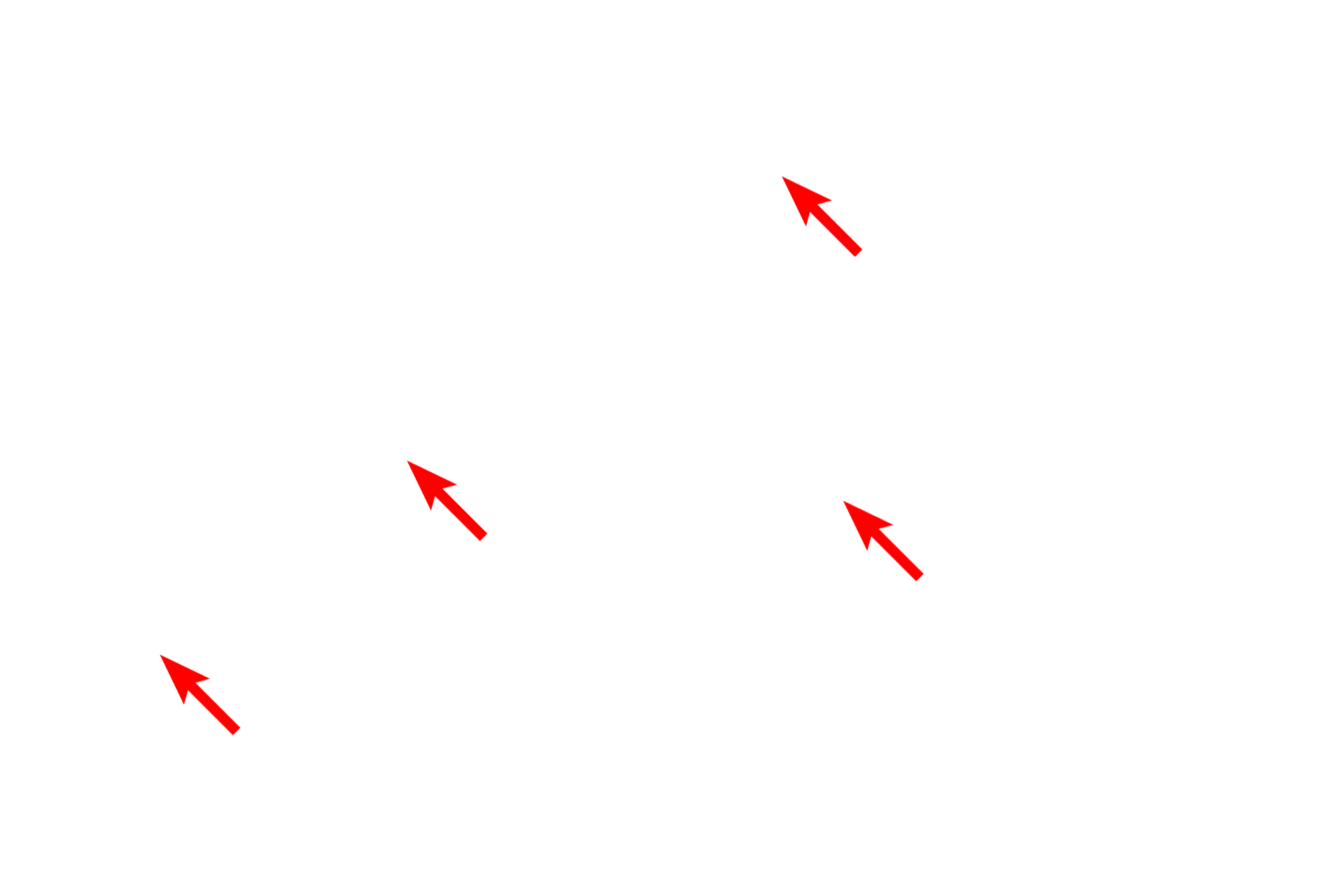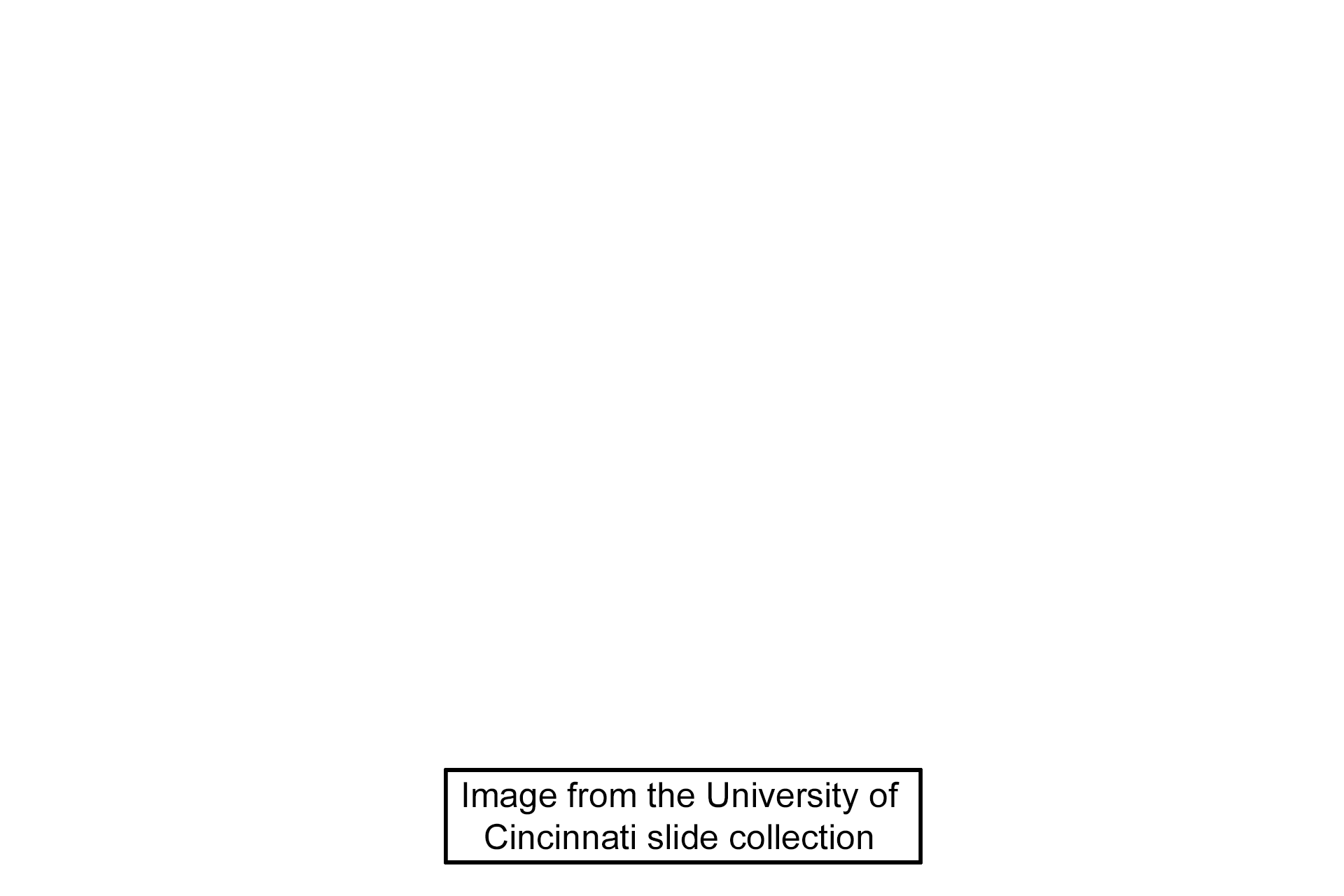
Bone matrix
The feature that most distinguishes bone from other connective tissues is the mineralized, inorganic component of the matrix, which forms an extremely hard tissue capable of providing support and protection. The inorganic component also prevents diffusion, and thus an extensive system of passageways is required to allow transport of nutrients and respiratory gasses through the matrix. The complexity of the matrix is best appreciated in ground bone specimens as seen here. Compact lamellar bone, 200x

Lamellae >
Lamellae > The matrix of mature bone is organized into lamellae that can be either by arranged concentrically (seen here) or as flattened plates on the surface of a bone.

Osteocyte lacunae >
Osteocytes occupy small spaces called lacunae that are located between the matrix lamellae. In this preparation, lacunae appear as elongated black spaces. Delicate tunnels in the matrix radiate out from the lacunae, which, in life, contain fine cytoplasmic processes extending from the osteocytes.

Canaliculi
Osteocytes occupy small spaces called lacunae that are located between the matrix lamellae. In this preparation, lacunae appear as elongated black spaces. Delicate tunnels in the matrix radiate out from the lacunae, which, in life, contain fine cytoplasmic processes extending from the osteocytes.

Haversian system
Concentric lamellae surround a central space called the Haversian canal and the entire structure is a Haversian system (osteon). Haversian canals contain blood vessels and are lined by endosteum.

- Haversian canals >
Concentric lamellae surround a central space called the Haversian canal and the entire structure is a Haversian system (osteon). Haversian canals contain blood vessels and are lined by endosteum.

Image source >
Image source > Image from the University of Cincinnati slide collection.